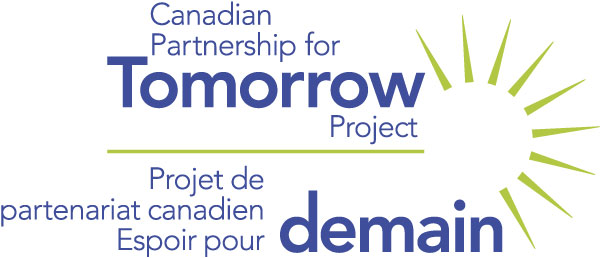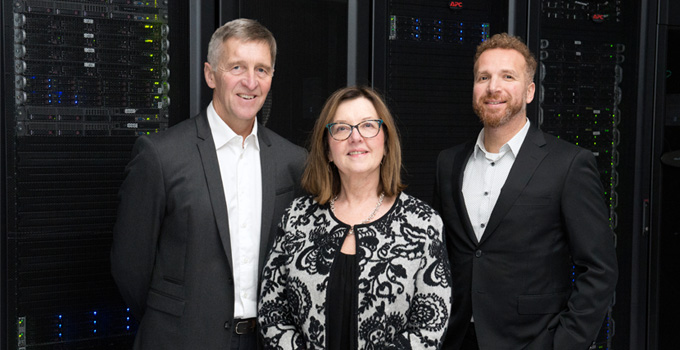Building a Canadian population cohort for a new era of health research
Understanding the links between our biology, environment and health is essential for preventing diseases like cancer. Years of research have led to important health insights, such as the link between smoking and cancer and the roles diet and exercise play in the development of heart disease. These findings have led to public policies that reduce smoking and encourage healthy living, which have, in turn, helped to reduce the incidence of cancer and other diseases.
The evidence that enabled these changes originate from long-term cohort studies, which followed populations of people over a long period of time, recording health and lifestyle factors, and eventually the health outcomes of their participants. While other countries have had large cohort studies that enabled disease prevention research, for many years Canada lagged behind.
 That changed over the last decade, with the development of the Canadian Partnership for Tomorrow Project (CPTP) and the establishment of recruitment activities in eight provinces. These cohorts worked together to collectively recruit more than 300,000 participants to CPTP, making it Canada’s largest-ever population cohort study.
That changed over the last decade, with the development of the Canadian Partnership for Tomorrow Project (CPTP) and the establishment of recruitment activities in eight provinces. These cohorts worked together to collectively recruit more than 300,000 participants to CPTP, making it Canada’s largest-ever population cohort study.
This year marked the beginning of a new phase for CPTP. In partnership with OICR, the University of Toronto (U of T) was selected as CPTP’s scientific home, under the leadership of Dr. Philip Awadalla, Director of Computational Biology at OICR, as National Scientific Director. The new CPTP leadership team includes Dr. John McLaughlin, a Professor at U of T’s Dalla Lana School of Public Health, where CPTP is now based. The new partnership builds on OICR’s established role as the base for CPTP’s harmonized databases, making them more accessible to researchers around the world through a single data portal – making it easier for researchers to access CPTP data to discover new insights in disease prevention and control.

Pictured (left to right): Dr. John Mc Laughlin, Executive Director of CPTP; Cindy Morton, Chief Executive Officer of the Canadian Partnership Against Cancer.; and Dr. Philip Awadalla, National Scientific Director of CPTP.
For the many who helped first build this national resource, it marks the realization of an ambitious, long-term goal. And for those who are currently leading, it provides a new opportunity to engage with the scientific community to make the most of CPTP’s remarkable assets, which have been generously donated by hundreds of thousands of Canadians to help improve the health of future generations.
Stronger together
Today the CPTP stands as a new and incredible resource for the international research community – a resource that is only now just beginning to be tapped into.
“With a cohort of 300,000 participants we are really well powered,” says Awadalla, noting that the harmonization of data from the regional cohorts in British Columbia, Alberta, Ontario, Quebec and Atlantic Canada was key to making the cohort large enough to make major contributions through studies of complex diseases like cancer.
While the regional cohorts will continue to operate and provide new data to CPTP over the next decades through ongoing follow-up questionnaires, the new national focus of CPTP will enable researchers to answer big, pan-Canadian questions. “Researchers will now be able to ask questions just as easily about Ontarians as they can about people in PEI, as CPTP brings information together in one place. That has been a critical driving force for harmonizing the data over the past few years,” says Awadalla. “We’re stronger together when everyone is working together.”
This cooperation will have a huge benefit for Canadians, since the data will provide insights specific to the health of the Canadian population. Canada’s population has unique characteristics that can’t all be found elsewhere, such as its ethnic diversity, population distribution and provincially-led public healthcare systems. “Because the Canadian population is unique, the data will have a unique Canadian flavour that you can’t capture by looking at populations elsewhere,” he says.
The result is a new set of data that will support precision health research in Canada – and ultimately lead to better tools to prevent, treat and manage diseases like cancer everywhere. The move will also help the study take on more of an international profile, including through collaboration with other major national cohorts such as the UK Biobank and the All of Us project in the US.
Today’s successes, two decades in the making
In establishing U of T as CPTP’s scientific home, Dr. John McLaughlin was appointed as CPTP’s Executive Director. This marks his return to an active role in the development of major cohort initiatives for Canada, with which he has been involved since the late 1990s. He was the Founding Director of the Ontario Health Study (OHS) and a key player in getting both CPTP and OHS started. For McLaughlin, the cohort’s current phase is one he and many others aspired to many years ago – but knew there was an incredible amount of work to do to get there.
“Comprehensive cohort studies are essential and foundation for a lot of health and biomedical research, but population scientists had recognized that they were missing in Canada,” said McLaughlin about the research landscape in the early 2000s. McLaughlin credits the Ontario Cancer Research Network (OCRN), OICR’s predecessor organization, for seeing the value of a cohort study early on. OCRN provided initial funding to assess the feasibility of building a provincial cohort in Ontario.
The idea wasn’t completely new – in fact, Alberta and Quebec had just launched their own regional cohort studies (both of which would later join CPTP). That helped make the case that a larger, national cohort was valuable. “We recognized the strengths of each provincial cohort, but also that a larger, pan-Canadian cohort consortium was feasible and would add tremendous value,” McLaughlin said.
CPTP brings information together in one place. That has been a critical driving force for harmonizing the data over the past few years, We’re stronger together when everyone is working together.
- Dr. Philip Awadalla
This coincided with the formation of new organizations that both saw the potential in a large cohort study: OICR in Ontario, and the Canadian Partnership Against Cancer (CPAC) nationally. Both organizations had the development of a new cohort as part of their foundational mandate. “It was the shared vision by the research community and funders, plus strategic directions set by CPAC and OICR that brought the new investment that enabled the launch of a large cohort initiative, which has resulted in the solid foundation that now exists,” said McLaughlin.
For McLaughlin the full integration of the cohorts this year and the establishment of a scientific home are the major final steps toward realizing the aspirations set almost two decades ago. “Now we can reset the focus to collectively deliver on the promise of the big, bold aspirational project that was anticipated from day one.”
Looking ahead
In March of this year, Awadalla’s lab published a paper in Nature Communications that showed that environmental exposures such as air pollution are more important in determining respiratory health than inherited genes. The study, which combined biological and health questionnaire data from Quebec with national environmental data, shows the potential of CPTP as a resource for researchers. While the study looked at regional factors in rural and urban Quebec, the findings have outcomes that are applicable worldwide.
“The study really shows how CPTP data can be used to better understand how our genes interact with environmental exposures and shape individual health,” explains Awadalla. It also showed the extreme promise of genomic sequencing, which is rapidly dropping in price and becoming increasingly feasible to perform in large scale studies such as CPTP.
Awadalla’s study sequenced blood samples provided by participants to get crucial information about underlying genetic factors that could not easily be reported by participants on a questionnaire. It’s not the first of his studies to harness the genomic potential of CPTP data – earlier studies published in Science in 2014 and Nature Genetics in 2015 have already done so. This study is very much in line with Awadalla’s future plans for CPTP. “We want to get biologics out of the freezer and into data format,” he says. “We’re not just looking to get large numbers of participants, but we’re also capturing large amounts of data in order to have deeper insights and to create more precise prevention strategies.”
The study really shows how CPTP data can be used to better understand how our genes interact with environmental exposures and shape individual health.
- Dr. Philip Awadalla
Awadalla also plans to ensure there are stronger linkages with provincial administrative health data, significant resources that can help to enhance the data provided by participants on the questionnaire by linking what is self-reported with actual interactions with the healthcare system (data is de-identified so that researchers cannot identify individual participants).
While recruitment efforts have wrapped up in eight provinces, Manitoba has now joined the program and has begun activities to support recruitment. Furthermore, Awadalla hopes to further engage with some communities that are currently underrepresented, so dialogue is beginning regarding including Indigenous communities. “We have a number of individuals who are participants in the study with Inuit, First Nations and Métis background. We’d like to actively engage with leadership in those communities to assess how we can assist in supporting health research in their interests.”
There is also a new effort to better engage the scientific community to make them aware of CPTP and its value. Part of this will be setting up a new scientific leadership structure, which Awadalla hopes will bring in new perspectives and new areas of expertise. It will be up to this leadership to ensure that the data entrusted to them by participants have the greatest impact possible for future generations.
Awadalla is interested in watching how the cohort evolves over time and how the research community uses the data. “It is a dynamic and living cohort that will continue to evolve. We will be continually engaging with our participants to ask new questions that we wouldn’t be able to glean from electronic health records or other means. The information in the cohort will only continue to grow, and become even more valuable as time goes on.”
Even though the program to date has already supported well over 100 research projects from academic scientists and industry, the data will continue to grow and become more powerful. It is now in the hands of the research community to make the most of it. “We have a good idea of what can be done with these data, but there will also be discoveries that go beyond what we’ve imagined,” says Awadalla. “The power of the data is that it is available for the whole research community to use, and as a result the potential for discovery is immeasurable.”